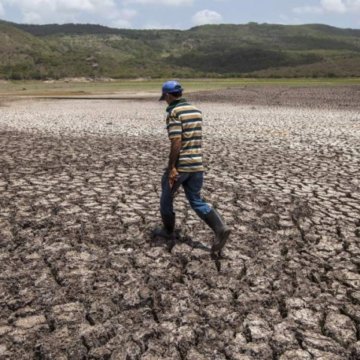- About
- Topics
- Picks
- Audio
- Story
- In-Depth
- Opinion
- News
- Donate
- Signup for our newsletterOur Editors' Best Picks.Send
Read, Debate: Engage.
| located: | El Salvador, Honduras, Guatemala |
|---|---|
| editor: | Magdalena Rojo |
Violence is one reason why Central Americans decide to migrate into the United States. Other reasons often stated, are poverty and a lack of job opportunities. All these motivations to migrate, however, can be linked to a bigger, global issue. More and more migrants state that the driving factor for their move was climate change. This is especially the case for the region called 'The Dry Corridor' that crosses Central American countries, including El Salvador, Honduras, and Guatemala.
The Dry Corridor is vulnerable to the effects of climate change, and has been suffering from rising temperatures and droughts for various seasons. From 2015 on, these weather conditions have been affecting harvests of small farmers who often depend only on their corn, beans or coffee.
Hundreds of thousands of families in Guatemala lost their crops for a number of seasons in a row, and found themselves facing food insecurity. Guatemala is amongst the countries with the highest numbers of malnourished children.
Before, some people used to migrate to Honduras to work on coffee plantations, but today, this is not possible, as the situation in the neighbouring country is very similar to the Guatemalan, if not worse. People often see no other option other than risking their lives and cross the border, first to Mexico, and then, if possible, to the United States.
Non-governmental organisations, international agencies, farming cooperatives, including the Guatemalan government are implementing projects to teach people how to adapt to the changing environment and to strengthen the resilience of local communities.
For example, farmers growing coffee can plant faster growing trees above the coffee plants to protect them from the sun. Brachiaria is a grass that helps lower the soil temperature where the coffee roots develop. In some areas, the solution is to move into a higher altitude. As much as these adaptation mechanisms are crucial to solving the current emergency situation of the farmers, they alone do not stop climate change from happening.
There are no doubts anymore that the link between climate change and migration exists, and this not only in The Dry Corridor. Even the UN Global Compact for Migration talks about climate-caused migration. According to the International Organization for Migration, the most cited estimate says there will be 200 million people moving across or within the borders of states by 2050.
However, searching for the solutions to reduce the numbers of migrants is like taking a pill to calm the pain instead of treating the cause. Migration, in this case, is a symptom – a consequence. It is a natural decision made by a human whose environment cannot provide for him or her anymore.
Western leaders calling only for solutions to stop desperate people from crossing the borders, while ignoring the causes, are just burying their heads in the sand.
Photo: Lucky You TV
